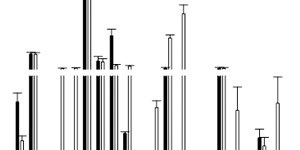By Arnau Busquets

Arnau Busquets Garcia is a doctor in Biomedicine and a postdoctoral researcher at the Neurocentre Magendie in Bordeaux. For the past 10 years he has studied the effects of cannabis on our brain.
Nowadays, there is a constant that researchers explain their research and their experiments to family, friends and other people that is not familiarized with the science field. Very often, the researchers, which are trying to investigate the effects of cannabinoids in mice, receive similar questions: how you do to have a mouse consuming cannabis? Are the mice smoking? Which are the effects in laboratory animals?
Most of the studies, although there has been some works studying the inhalation of cannabinoid substances, use an injectable form of the main psychoactive component of the plant Cannabis Sativa, which is called Δ9-Tetrahydrocannabinol (abbreviated as THC). Moreover, there are new studies using other synthetic cannabinoids also in an injectable way. In most of the cases, these solutions are injected systemically in the intraperitoneal cavity of the animals and their effects are compared to animals injected with a control solution.
Which are the effects of cannabinoid drugs in animals?
Cannabinoid drugs are known to induce several behavioural responses in humans. In rodents, these compounds are also able to induce several behavioural responses. Indeed, there is a behavioural test called Tetrad that is test used in the field to know if a drug has cannabinoid-like properties. This test consists in the evaluation of 4 different behaviours such as body temperature, locomotion, catalepsy and analgesia. It is known that all cannabinoid drugs induce a decrease in locomotion, reduction of body temperature, cataleptic effects and increased analgesia responses. These tests are done some time after the administration of the cannabinoid drugs. In particular, to analyse locomotion researchers quantify the movement of the animals in an open field; they use a rectal thermometer to measure temperature before and after the cannabinoid injection; they measure catalepsy by quantifying the time that mice spent in a plastic bar without movements and; a hot plate is used to analyse the analgesia reaction of the animals.
This is the typical test that is used to know if a drug has cannabinoid-like responses. Moreover, to further confirm that, researchers use animals lacking the cannabinoid receptors or the pharmacological blockade of these receptors to ascertain if these behavioural effects are dependent on the cannabinoid receptors activation. Besides this, there are numerous cognitive, anxiety or motor coordination tasks where the effects of cannabinoids have been tested. However, one of the effects less studied in animals is the possible psychotic-like states induced by cannabinoids. In this article, we will describe how researchers are addressing this issue.
Can we study positive psychotic symptoms in rodents?
Reading this question most of you would answer with a simple and straight 'No'. This is possibly the right answer although researchers should continue to put doubts in this simple answer having in mind the huge complexity of these mental states. In this article, we want to review which attempts have been done in the literature to try to model positive psychotic states, in particular those one's induced by cannabinoids
Descriptions of mental illness such as psychotic episodes exist throughout history and across cultures and civilizations. The most striking and characteristic features of psychotic disorders are positive psychotic symptoms, such as hallucinations and delusions, which are examples of the so-called positive symptoms. If one read the Diagnostic and Statistical Manual of Mental disorders (DSM-V), these symptoms are required to define a psychosis and can be found in many brain disorders. These psychotic outcomes can be also caused by drug use although we still have a limited understanding of the underlying mechanisms and the big problem is the lack of suitable animal models. The association between cannabis, psychosis and schizophrenia has been recently suggested although there is still controversy in the field (see www.fundacion-canna.es/en/cannabis-and-schizophrenia-risk-factor-or-therapeutic-alternative). However, the aim of this article is not to discuss this possible link but to try to understand how we can study positive psychotic-like states in mice (if possible).
It is generally accepted that the validity of animal models for the study of psychiatric disorders is a controversial subject. Animal models have notably many limitations, as some of the behavioural symptoms such as the positive one's are thought to be distinctive for humans and not measurable in animals (Wong and Van Tol, 2003; van den Buuse., 2005; Mouri., 2007; 2011). For example, you can imagine it is hard to determine if mice are experiencing delusions, or if rats are hallucinating. As a result the major focus of recent research has shifted to better understand the neurobiology underlying other typical endophenotypes found in psychotic diseases such as the negative (eg deficits in motivation or social interaction), cognitive (eg deficits in working memory and attentional set-shifting) or sensorimotor (eg deficits in prepulse inhibition) symptoms, since they can more easily be studied in rodents.
Locomotion: A first failed attempt.
Drug-induced hyper-locomotion in rodents has long been considered an acceptable approximation of positive symptoms of at least drug-induced psychotic-like states (Wong and Van Tol, 2003; van den Buuse, 2005; Mouri, 2007; Jones, 2011). However, it is obvious that locomotor activity cannot be used to study the mismatch between perception and reality, that is the true hallmark of positive psychotic-like states (Wong and Van Tol, 2003; van den Buuse et al. 2005). Cannnabis-induced hyperlocomotion has been demonstrated at low doses although, as we already commented, this is not a reliable measure of cannabis-induced psychotic-like states. Thus, although you can find many works using locomotion as a measure to show psychotogenic effects of some drugs, researchers must find alternatives to try to model at least the hallmark of positive psychotic symptoms.
Pavlovian conditioning : A possible solution?
These symptoms such as hallucinations and delusions can be characterized by impaired perception of the reality that some authors define as reality testing. An impaired of reality testing is primary defined as the inability to distinguish between an actual event and an internal representation of an absent event. Interestingly, this kind of states can be observed in animal behaviour using classical associative learning. Thus, to overcome the great limitations modeling psychotic symptoms in animals, some recent studies have used behavioural procedures in rodents designed to measure the accuracy of 'reality testing' (McDannald and Schoenbaum, 2009; McDannald 2016). Alterations in 'reality testing' performance can account for an indication of an impairment in perception, which subsequently might lead to offer a means to successfully study psychotic-like behaviour in animal models.
One of the most well-characterized associative learning model is the Pavlovian conditioning, where a conditioned stimulus comes to activate an internal representation of the unconditioned stimulus with which it is paired, and this representation can serve for acquisition of new learning about the unconditioned stimulus. Recently, Powers et al. (2017) have provided a clear demonstration that Pavlovian conditioning can result in the perception of a stimulus in its absence, when this perception is activated after associative learning. In particular, when a visual cue was paired with an auditory cue, it could result in perception of the auditory stimulus, after presentation of the visual cue alone. Moreover, this effect was more pronounced in individuals who reported hallucinations and voice-hearing in everyday life situations. Taking into account that a hallucination is normally defined as a sensory perception in the absence of a corresponding external or somatic stimulus, these results proposed an interesting way of investigating hallucination-like behaviour in humans.
Notably, it appears that rodents, like humans, could also experience perceptions of absent stimuli when these perceptions were activated after associative learning. For example, where in humans a visual cue, previously paired with tones, could elicited activation in brain regions sensitive to auditory stimulation, in rats, odor cues, previously paired with sucrose, were able to activate gustatory neurons typically activated by sucrose, as well as elicit positive responses typically produced by exposure to sucrose itself. This inability to distinguish between a sensory representation and the presence of the actual stimuli is also considered impaired reality testing and can be considered a way to study the possible mental processes behind psychotic states.
Higher order-conditioning : One step further
Conditioning processes can be as simple as one cue (e.g odor) activating the sensory and hedonic properties of another (e.g. sucrose), but can also be more complex and indirect associations are daily present in our choices. These processes are called higher-order conditioning paradigms. While in first-order Pavlovian conditioning, association is acquired by pairing a conditioned stimulus (odor, tone, light) with an intrinsically aversive or rewarding unconditioned stimulus (sucrose or foot shock), in higher-order Pavlovian conditioning, there is a combination between an association between neutral stimuli together with an association between conditioned stimuli and rewarding or aversive outcomes. These processes are very important in our daily life as human behaviour is often governed by mediated learning, based on previous events implying incidental associations between different sensory cues. In other words, we are often repulsed or attracted by stimuli never explicitly paired with negative or positive outcomes, but previously associated with other stimuli paired with a specific aversive or rewarding meaning (Bornstein et al., 2017; Shohamy and Wagner, 2008). These processes are well conserved in all mammals including rodents (Gewirtz and Davis, 2000).
An interesting phenomenon happens when you increase the number of associations between neutral stimuli because the subjects acquire more information, allowing the separation between internal representation and real value of the stimulus. In other words, with moderate training animals form a unified, sensory representation of the two different preconditioned stimuli. However, with prolonged exposure to the stimuli, the subjects acquire more information, allowing them the separation between the real saliences of two different stimuli and becoming able to separate their specific features. As the neutral stimuli are indeed separated entities in reality, researchers defined this process as "reality testing".
Reality testing task : A way to reveal cannabinoid-induced psychotic states?
As stated above, "Reality testing" is the process through which individuals verify the correspondence between the internal representations of meaningful stimuli and their real presence and meaning in the external world (McDannald and Schoenbaum, 2009). This is of course a peculiar human ability, but evidence exists that animals can construct complex internal representations of their world (McDannald et al., 2011). Presumably, these representations can be distorted in animal models of psychoses in a similar way as they do in humans (McDannald et al., 2011). Several studies have shown reality testing impairments in neurodevelopmental and genetic animal models of schizophrenia as well as by different psychotogenic drugs (e.g. ketamine, amphetamine).
Recently, it has been shown that acute administration of the cannabinoid agonist THC alters 'reality testing' in mice (Busquets-Garcia, Soria-Gomez, Redon, et al. 2017). This 'reality testing' impairment produced by the acute administration of THC and psychotogenic drugs before the test, seems to reflect a cognitive alteration linked to the perception of the stimuli during retrieval rather than their encoding, resembling human perceptual delusions, which are hallmarks and starting points of positive psychotic-like symptoms. Importantly, the 'reality testing' impairment induced by acute THC treatment was reversed by antipsychotic pre-treatment, supporting the psychotic-like nature of this effect. Moreover, the THC effect was also blocked by the systemic injection of the CB1 antagonist rimonabant, indicating that excessive CB1 receptor activity alters the relationship between sensory 'percept' and mental 'concept'.
Overall, coming back to the initial question, the answer can be still a NO. However, as we explain along this article, researchers are trying to model impairments on sensory perception as a possible mean to approximate to the brain mechanisms underlying one of the hallmarks of positive psychotic-like states. In my opinion, in science we should be open and, although accepting all the criticisms we shouldn't stop just saying that something cannot be model in laboratory animals. Instead, we should put effort to try to model complicate human conditions in order to study for example cannabinoid/induced psychotic-like states.
References:
1- Mouri A, Noda Y, Enomoto T, Nabeshima T. Phencyclidine animal models of schizophrenia: approaches from abnormality of glutamatergic neurotransmission and neurodevelopment. Neurochem Int. 2007; 51:173-84.
2- Wong AH, Van Tol HH. Schizophrenia: From phenomenology to neurobiology. NeurosciBiobehav Rev.2003 ;27 :269–30.
3- van den Buuse M, Garner B, Gogos A, Kusljic S. Importance of animal models in schizophrenia research. Aust N Z J Psychiatry. 2005 ;105 :550–557.
4- McDannald M, Schoenbaum G. Toward a model of impaired reality testing in rats. Schizophr Bull. 2009 ;35:664-667.
5- McDannald MA, Whitt JP, Calhoon GG, Piantadosi PT, Karlsson RM, O'Donnell P et al. Impaired reality testing in an animal model of schizophrenia. Biol Psychiatry. 2011 ; 70 : 1122-1126.
6- Powers AR, Mathys C, Corlett PR. Pavlovian conditioning-induced hallucinations result from overweighting of perceptual priors. Science. 2017. 357(6351):596-600,
7- Bornstein, A.M., Khaw, M.W., Shohamy, D., and Daw, N.D. 2017). Reminders of past choices bias decisions for reward in humans. Nat Commun 8, 15958.
8- Shohamy, D., and Wagner, A.D. 2008). Integrating memories in the human brain: hippocampal-midbrain encoding of overlapping events. Neuron 60, 378-389.
9- Gewirtz, J.C., and Davis, M. (2000). Using pavlovian higher-order conditioning paradigms to investigate the neural substrates of emotional learning and memory. Learn Mem 7, 257-266.
10- Busquets-Garcia, A., Soria-Gomez, E., Redon, B., Mackenbach, Y., Vallee, M., Chaouloff, F., Varilh, M., Ferreira, G., Piazza, P.V., and Marsicano, G. (2017b). Pregnenolone blocks cannabinoid-induced acute psychotic-like states in mice. Mol Psychiatry 22, 1594-1603.


